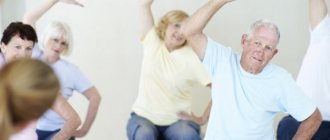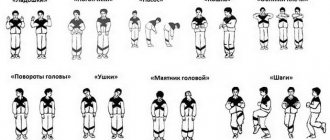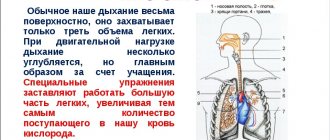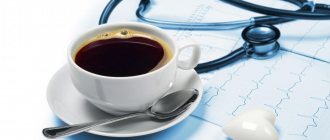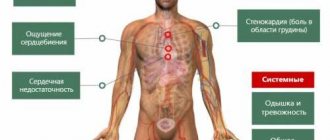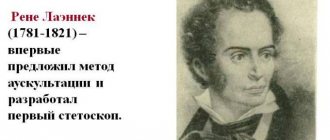General information about tachycardia
There are two types of tachycardia: physiological (sinus) and pathological (supraventricular and subventricular). The first occurs, as a rule, after excessive physical or emotional stress. The second one is even at rest. Consultation with a specialist is required if palpitations are accompanied by the following symptoms:
- occurs at rest and does not go away for several minutes;
- chest pain appeared;
- dizziness and darkening of the eyes;
- repeated fainting.
If the pulse rate is above 120 beats per minute for a long time, you need to call an ambulance.
Breathing exercises for tachycardia
Proper breathing is a kind of aerobic exercise. People of all ages and with different physical fitness can do this kind of gymnastics. Breathing exercises have a beneficial effect on many body systems:
- the filling of the heart with blood improves;
- the heart muscle is trained;
- blood is better saturated with oxygen;
- gas exchange increases;
- the pulse stabilizes.
The proper functioning of the heart depends on the amount of oxygen in the blood. Breathing exercises activate gas exchange processes, dilate coronary vessels, and improve cardiac circulation. The pulse decreases, the attack stops. Proper breathing calms the nervous system and relieves emotional stress.
Exercises
Breathing exercises are not considered as a treatment for tachycardia. However, it helps to calm down, relieve a panic attack and ease the attack. Several simple breathing exercises are described in the table:
| Way | How to do |
| Deep breathing | Take a deep breath and long exhale (2-3 times longer than inhalation). Breathe in this way for 7-10 minutes. |
| Belly breathing | After a deep breath, hold your breath and push the air towards the diaphragm, “inflating” your stomach. After a slight delay, the air is slowly exhaled. |
| Inhalations through the nose | Close your right nostril and inhale sharply and deeply through your left nostril. Close the second nostril, releasing the pinched one, and exhale sharply. Repeat nasal breathing for 3-4 minutes. |
Return to contents
A set of exercises for tachycardia
Tachycardia is a pathology in which the number of heart contractions (HR) increases relative to the norm - 60-80 beats per minute.
2 years ago, 03/30/2017
Tachycardia is a pathology in which the number of heart contractions (HR) increases relative to the norm - 60-80 beats per minute.
An attack of tachycardia can be a completely physiological phenomenon, for example, after active physical exertion. In this case, it goes away on its own and does not require any intervention, but pathological forms must be treated under medical supervision.
Usually the attack begins suddenly, the contraction of the heart accelerates (up to 120-150 beats per minute), weakness, stabbing pain in the heart, and a feeling of fear may occur. Provoking factors can be stress, large meals, drinking alcohol or caffeine, an allergic reaction, bloating, hot flashes during menopause in women.
How to stop an attack of tachycardia
Special exercises and techniques can help stop an attack of tachycardia at its first signs.
- Take a deep breath and hold your breath, while trying to push the air down.
- Breathe deeply for 5-10 minutes: take a deep breath and exhale slowly (3 times longer).
- Press your fingers firmly on your eyeballs (until it hurts) for 10 seconds, then release. Continue this action for several minutes.
- Fill a basin with ice water and immerse your face in it for a few seconds. You can simply wash your face with cold water. The temperature change should cause your heart rate to drop.
- Sometimes a strong cough or artificially induced vomiting helps stop the attack.
If the condition does not improve and the pulse exceeds 120 beats per minute, immediately seek medical help.
Breathing exercises for tachycardia
It is often easier to prevent tachycardia than to deal with attacks. And special breathing exercises can help you in this matter.
It improves the filling of the heart with blood, trains the heart muscle, saturates the blood with oxygen, enhances gas exchange and stabilizes the pulse. In addition, it relieves emotional stress and calms the nervous system.
Many methods of correct breathing for tachycardia have been developed, but the most popular and effective gymnastics are Buteyko, Strelnikova and qigong.
Breathing exercises according to Buteyko
These exercises, which help the heart, are known all over the world and are practiced by people in many countries. Initially, the complex was developed for patients with asthma, but later its creator realized that it could also be effective for people suffering from tachycardia. It is based on diaphragm training, and the complex itself consists of seven exercises.
- Inhale through your nose (for 5 seconds), leaving your stomach at rest, stop breathing for a few seconds and exhale. Perform 10 approaches.
- Inhale for 9 seconds, filling the diaphragm with air first and then the chest. Exhale slowly, rest for a few seconds. Take 11 similar breaths.
- Massage the bridge of your nose during rest breaks.
- Breathe alternately through your left and right nostrils (close one with your finger). Take 10 breaths into each nostril.
- Take one deep breath, while drawing in your stomach and hold your breath for 8 seconds.
- Take 12 breaths over the course of a minute (each should last at least two seconds).
- Normalize your breathing.
This breathing exercise has some contraindications: age under four years, developmental delay or mental retardation, period of viral diseases, severe bleeding or chronic tonsillitis. In these conditions, exercise can make you feel worse.
Complex of breathing exercises according to Strelnikova
These breathing exercises for tachycardia help fill the blood with oxygen. They should be performed twice a day (ideally before breakfast and before bed) for 25-30 minutes. In this case, you can gradually increase the load every day.
Strelnikova’s gymnastics is also called paradoxical, because breaths in it are always combined with any movements that complicate this phase of breathing. The technique involves a short and noisy inhalation through the nose and a calm, smooth, voluntary exhalation (through the mouth or nose).
It is important not to take in too much air when inhaling and not to interfere with exhalation; let all the air come out completely.
At first, you can take 4 breaths, and then double them, gradually reaching 32 breaths in a row.
The complex includes a large number of breathing exercises; we will give only a few of the main ones.
- In a standing position, bend your elbows and place them in front of you (as if for a game of “Ladushki”), then take a short and noisy breath in through your nose and at the same time clench your hands into fists (only the palms move, the hands are motionless). Exhale smoothly and calmly, while unclenching your fists. For the first time, take 8 breaths, then you can gradually increase their number.
- While standing, take a few small breaths and then start walking (1 breath per step). For the first time, take 8 breaths, then you can increase their number.
- In a standing position, lower your arms down and clench your fists for each inhalation, and unclench them for each exhalation. Repeat 6 times with a 25 second rest.
- In a standing position, keep your hands on your belt, while inhaling, lower your hands down, strongly unclenching your fingers, and as you exhale, return them to their previous position. Perform 12 times with a rest of 5-7 seconds.
- Place your feet shoulder-width apart, while inhaling, bend over and place your arms to the sides, and as you exhale, return to the starting position. Repeat 12-13 times with short rest breaks.
- Tilt your head left and right, take a sharp breath at the end point of the tilt.
- Perform springy bends of the torso forward and at the same time take a sharp, noisy breath at the lowest point. It is not necessary to bend very low and straighten your back completely.
- Bend your arms at the elbows and raise them to shoulder level. Bring your arms together in front of your chest (at this moment the upper part of your lungs is compressed) and take a noisy, active breath at this moment.
- Stay in the starting position, perform springy bends back and bring your arms in front of your chest. Inhale at the extreme point of the inclination.
- Perform spring squats in a half-lunge (one leg in front, the other behind) and bring your arms down. Inhale at the extreme point of the squat at the moment when you bring your arms together.
- Bend forward and backward like a pendulum. Inhale at the extreme point of the tilt; when bending back, bring your arms together in front of your chest.
Source: https://varikocele.com/kompleks-uprazhnenij-pri-tahikardii/
Therapeutic exercise for tachycardia
Efficiency
For this disease, therapeutic exercises are prescribed by a doctor. In acute or pre-acute forms, exercise therapy is carried out in a medical institution under the supervision of a specialist. Some exercises can be done at home, after discussing the intensity of the exercise with your doctor. For heart disease, it is recommended to do daily morning exercises. Simple exercises can be done in the afternoon (best between 17-19 hours), but no later than 8 pm. Classes help:
- strengthen the heart muscle;
- increase vascular elasticity and improve hemodynamics;
- stimulate peripheral blood circulation;
- reduce cholesterol levels.
Return to contents
Physical therapy exercises
| Stage | Exercises | Number of repetitions |
| Warm-up | While sitting, move your arms to the sides and raise them above your head as you inhale, and lower them as you exhale. | 3—4 |
| In the same position, spread your arms out to the sides, palms up. Inhale - turn to the side, exhale - back. Give up. | 2-3 times in each direction | |
| Sitting on a chair, raise your legs and imitate fast walking. | 2-3 minutes | |
| Main part | While standing, hold onto a support with one hand. As you inhale, raise your free arm and leg, and while exhaling slowly, lower it smoothly. | 4-5 times in each direction |
| Holding the support with both hands, lunge backwards with your leg. | 5 times with each leg | |
| Place your hands on your belt and make rotational movements with your pelvis in both directions. | 5 times each way | |
| As you inhale, stretch your arms above your head, as you exhale, lower your arms. | 3—4 | |
| Lean your hand on the support and swing your leg back and forth. | 3-4 times for each leg | |
| Final part | Sitting on a chair, while inhaling, spread your arms to the sides, palms up, raise them above your head and lower them as you exhale. | 4—5 |
| Slowly walk around the room, inhaling on the 2nd step and exhaling on the 3rd. | 2-3 minutes |
If your heart rate increases during exercise, it is better to reduce the number of repetitions and do less intense exercise.
How to breathe with tachycardia?
Exercise therapy for cardiac tachycardia can be accompanied by breathing exercises, which increases the effectiveness of the exercises. It is better to do exercises in a well-ventilated area or in the fresh air. If you lose your breathing during exercises, reduce the number of repetitions and take a short break between them to restore your breathing.
Source: etodavlenie.ru
Useful exercises to strengthen the myocardium
In diseases of the cardiovascular system, it is the loads that can increase the resistance of the myocardium to oxygen starvation that bring benefits. These include walking, running, swimming, dancing. Breathing exercises have a similar effect on the heart muscle. Methods for carrying it out may differ, but the most important rule is that the exercises must be performed at an individual, comfortable level.
First aid for arrhythmia
The method of restoring heart rhythm using breathing is based on the fact that a measured rhythm of inhalation and exhalation, which a person can control, normalizes the rhythm of contractions of the heart muscle. Therefore, any option with counting the duration of respiratory movements helps with arrhythmia.
To do this, you can inhale for 2 - 3 counts and exhale for 4 - 6 counts. In this case, you need to be in a sitting position with a straight back. It is recommended to gradually stretch your inhalations and exhalations, focusing on your sensations.
After mastering this exercise, the following type of pulmonary exercises is recommended to prevent attacks:
- Left hand behind back.
- The right hand is located near the face.
- Close your right nostril with your right thumb.
- Inhale through the left nostril.
- Close the left nostril with your ring finger and exhale through the right nostril.
After 8 - 10 breathing cycles, you need to change hands. The duration of the first lesson should not exceed 2 - 3 minutes, then you can slowly increase it. The duration of inhalations and exhalations is determined by comfortable sensations.
Read also: List of medications for cardiac tachycardia
For cardiac aneurysm
The use of any load for training, even breathing, with an aortic or cerebral aneurysm, is possible only after consulting a doctor, since stress can provoke intense internal bleeding and death.
If there is a small and stable aneurysm or an operation has been performed to remove this vascular defect, then the doctor may allow you to do gymnastics, including breathing. In this case, any low-intensity and slow movements with simultaneous inhalation and exhalation are indicated:
- spread your arms to the sides - inhale, hug yourself by the shoulders with them - exhale;
- with the pelvis stationary, turn the chest to the right - inhale, return to the starting position - exhale;
- in a position lying on your back, inhale with your stomach for 2 counts, raising the abdominal wall; for 4 counts, exhale, drawing in your stomach.
Watch the video about doing exercises for the heart and their benefits:
After operation
From the second day, with an uncomplicated postoperative course, patients begin breathing exercises under the guidance of a doctor to prevent congestion in the lungs. To do this, it is recommended to spend 5-6 times a day for 5 minutes:
- exhale through closed lips (movements like when blowing out a candle);
- inflating balloons or rubber toys;
- exhaling air through a straw into a glass of water.
After 5-6 days it is allowed to sit on the bed and walk within the ward. At this time, breathing exercises are carried out in an expanded mode. Recommended:
- deep belly breathing with accentuated exhalation,
- smooth stretching of the exhalation length,
- inhale for 3 counts and exhale, and then 2 more short exhalations.
With tachycardia
To slow down your heart rate you need maximum relaxation. This can be achieved by changing the ratio of the duration of inhalation and exhalation, as well as by pausing after exhalation. In the first lessons, the ratio of these phases is 3:5:2.
Every day they are increased by 1 count, if discomfort appears, they are stopped until a stable result is obtained, and then you can continue to stretch each breathing movement. If at first it is difficult to breathe like this, then after 3-4 cycles they return to normal breathing; after its restoration, it is recommended to extend the lesson.
To improve blood vessels
To normalize vascular tone and increase performance, the following exercise is performed: after a normal (non-forced) inhalation, you need to exhale sharply and briefly, while drawing in your stomach as you exhale. This is followed by a passive inhalation and a sharp exhalation.
Do 10 cycles of the right nostril with the left one closed, change sides, also take 10 inhalations and exhalations, then with both nostrils 15 times.
How to lower your heart rate
Rapid pulse, dizziness, a feeling of fear and nervous tension - these signs directly indicate tachycardia. On average, the heart rate can range from 60 to 90 beats per minute - such indicators are considered normal. However, in some cases, the heart rate increases, including after exercise, when adrenaline is released (due to stress or positive emotions) and in hot weather. If the heart begins to beat quickly for no reason, this symptom must be quickly eliminated, since the increased load on it can be dangerous. There are several simple and proven ways to calm your heartbeat at home, even if you don’t have a first aid kit at hand.
Breathing exercises according to Buteyko
One of the popular types of breathing exercises has become breathing exercises according to Buteyko, and it is now promoted almost as a panacea for all diseases. Of course, this is far from true.
Konstantin Pavlovich Buteyko himself developed it solely for one purpose - the prevention and treatment of chronic nonspecific lung diseases. And in this sense, it really helps very well.
The essence of the technique is that when switching from deep to shallow breathing, ventilation of the lungs improves, blood oxygen saturation increases, and blood vessels dilate. This eliminates oxygen starvation, which underlies a number of diseases, primarily those of the respiratory system.
Therefore, the following exercises are recommended for patients:
- Sit on a chair, relax and breathe deeply;
- Then switch to shallow breathing with pauses between breathing movements of 3-4 seconds;
- Return to deep breathing again;
- In a similar mode, perform breath-holding training.
Can the Buteyko technique help patients suffering from tachycardia? Yes, it can, but only indirectly. Strengthening the lungs has a positive effect on the functioning of the heart; this is a good workout for the whole body.
Let us repeat once again: the main positive effect is on the respiratory system, everything else is secondary.
What to do if your heart rate suddenly increases
When the pulse quickens for no apparent reason, it causes fear and anxiety. The main thing in such a situation is not to be nervous and try to determine what is happening in the body. If tachycardia remains the only symptom, you should breathe deeply and remain calm. Warning signs may include pain in the heart area that radiates to the neck or arm, as well as numbness and trembling of the limbs. In most cases, they are absent, and you can calm your heartbeat at home quickly, thanks to several useful methods.
Chronic tachycardia - basic recommendations
Single attacks of tachycardia can occur in every person. However, if they happen regularly, it is worth getting examined and reconsidering your lifestyle. Physical activity, nutrition, the presence of chronic heart and vascular diseases - all these factors are taken into account when making a diagnosis.
One of the reasons why cases of tachycardia may occur is a deficiency of minerals in the blood. Potassium, calcium, sodium and magnesium affect the state of the cardiovascular system, and it is important to design your diet in such a way that they are present in sufficient quantities. These substances can be found in the following products:
- potassium - in tomatoes, potatoes, fresh herbs, as well as in dried fruits, meat, legumes and natural black tea;
- calcium - its sources are dairy and fermented milk products, cheese, parsley, oatmeal;
- sodium – in meat and milk, red fish, caviar, as well as spices, vegetables and fruits;
- magnesium – found in nuts and seeds, soy products.
General recommendations for performing breathing exercises
The main recommendation for performing breathing exercises is to perform it under the supervision of a specialist. You should not start it yourself on the advice of friends or recommendations from the Internet. It may be dangerous. No one knows your specific situation and your individual contraindications.
Therefore, before starting breathing exercises, if you have any diseases of the cardiovascular system, including attacks of tachycardia, you should definitely consult a doctor.
The second piece of advice is to never try to replace drug therapy with breathing exercises. You must strictly follow the treatment regimen prescribed by your doctor. And breathing exercises can be a good addition to it, but not a replacement.
Also, when performing breathing exercises, you should adhere to all the principles of physical therapy. Breathing exercises should also be dosed, systematic, individually selected, etc. In this case, they will be most useful.
And one more recommendation - you should not expect a miracle from breathing exercises. Still, this is a purely auxiliary method. And if the medications don’t work, then no amount of gymnastics will help. Yes, it somewhat increases the possibilities of adaptation. Yes, it gives a training effect. But nothing more. Breathing exercises have never cured anyone.
In this sense, it should be recalled that its implementation is considered as one of the possible components of a healthy lifestyle.
We stop an attack of tachycardia in 6 steps
Tachycardia in medicine is considered as a symptom of various heart diseases. But it is not always only cardiac failures that lead to an attack of tachycardia; sometimes this condition is provoked by endocrine disorders or neurological pathologies.
Sometimes tachycardia acts as a dangerous syndrome that can cause other types of arrhythmias. People prone to this condition should know how to stop the attack in time. The attending physician will inform them about taking medications.
Symptoms of the condition
There are no warning signs of tachycardia. The condition can be detected already at the moment when the number of heart beats becomes quite frequent.
When the myocardial contraction frequency reaches 110 beats/min, a person develops symptoms characteristic of this condition:
- there is a feeling that the heart may jump out of the chest;
- there is headache and dizziness;
- the person often sweats, shortness of breath appears;
- Often a person feels sick;
- it gets dark in the eyes;
- the mouth becomes dry, the skin becomes pale.
An attack of tachycardia, in which the pathological centers of the conduction system are located in the atria, is manifested by sweating, frequent urination, increased temperature, and gas formation.
Sinus tachycardia is characterized by a doubling of the heart rate. The person is excited and cannot sleep at night. At the beginning of a nocturnal episode of a seizure, the person immediately wakes up.
Also, with sinus tachycardia, the patient loses his appetite. After the attack ends, on the contrary, he really wants to eat. Although the heart rate is increased, blood pressure decreases.
The benefits of breathing exercises for the heart
If you observe a person who is under stress or experiencing an attack of heart pain, then rapid and shallow breathing will be noticed in everyone. Since our body works on the principle of feedback, slowing down and deepening breathing can have a healing effect on many organs. Even simple fixation on an even rhythm and awareness of the duration of the breathing cycle is used in meditative practices.
The positive effect of breathing exercises is manifested in this way:
- the blood and muscle fibers of the heart are saturated with oxygen;
- with deep breathing, the cavities of the heart are better filled with blood and are released from it during contraction;
- when holding your breath, an artificial oxygen deficiency is created, which dilates the cerebral and coronary vessels;
- the rhythm of contractions is normalized;
- the balance between the processes of excitation and inhibition in the cerebral cortex is restored.
Breathing exercises are effective for preventing congestion in the lungs. It is recommended in the early recovery period after a heart attack and cardiac surgery. Sometimes this is the only type of activity available to the patient.
We recommend reading the article about exercises for the heart. From it you will learn about physical activity and basic rules for training, useful exercises for the heart muscle.
And here is more information about exercises for arrhythmia.
Causes
Tachycardia can begin due to physiological effects or for pathological reasons. In the first case, an attack develops due to factors not related to the disease and organ dysfunction. It is normal for your heart rate to fluctuate occasionally. This happens in case of stress, physical strain, drinking alcohol or a cup of strong coffee. At this time, the heart speeds up and the pulse rate can reach 90 beats per minute.
Attacks of tachycardia can be observed with the following cardiac pathologies:
- myocarditis and myocardial dystrophy;
- congenital or acquired heart disease;
- hypertension, when blood pressure reaches 140/90 mm Hg. Art and above;
- ischemic disease;
- other cardiac anomalies;
- cardiomyopathy.
There are a number of conditions that are not directly related to cardiac activity, but can also cause attacks of tachycardia, among them:
- menopause in women;
- hormonal disorders in the body;
- sudden changes in blood pressure in the arteries;
- vegetative-vascular dystonia;
- presence of allergies;
- anemia;
- infectious diseases and the development of purulent formations;
- ARVI and influenza;
- the presence of neoplasms of various etiologies.
If a person uncontrollably takes certain medications, for example, antidepressants, then in this case the heart rhythm is often disturbed. Even mucolytics can lead to tachycardia as a side reaction.
Attacks occur after consuming alcohol, drugs, or caffeinated drinks. And these are not all the reasons that lead to an attack. Even diet can affect this; it has been proven that people suffering from obesity are in most cases susceptible to heart disease.
The benefits of breathing exercises
Proper breathing recharges the entire body. The training is available for people of any age and different levels of physical fitness. This type of exercise has a beneficial effect on many organs and systems of the human body:
- trains the heart muscle;
- saturates the blood with oxygen;
- increases gas exchange;
- stimulates blood circulation;
- reduces cholesterol levels;
- normalizes the pulse.
The normal heart rate depends on how much oxygen is in the blood. With the help of training, you can stop the attack, as well as relieve nervous and muscle tension, calm down and bring your heart rate back to normal. You can do breathing exercises almost anywhere and at any time of the day. For example:
- For 7-10 minutes, take deep breaths and exhales 2-3 times.
- As you inhale, pause your breathing, pushing the air towards the diaphragm, exhale slowly, relaxing your stomach.
- Alternately breathe, healing the right and left nostrils, exhale sharply while breathing through the nose.
Return to contents
How to provide first aid?
During an attack of tachycardia, you should definitely call a doctor, but you shouldn’t sit idly by waiting for it, you should try to quickly relieve the dangerous symptoms at home.
- Invite the patient to take a deep breath and hold his breath for a while. The air is exhaled slowly, without rushing. And so on for 5 minutes.
- Press firmly on the area of the eyeballs. The duration of this pressure lasts 10 seconds.
- To lower your heart rate, you need to immerse your head in cold water or at least wash your face with cold water.
- If health workers are already on the way, then it is advisable to do without medications, otherwise to relieve the life-threatening condition you need to take one of the following medications: Valocordin or Corvalol.
- The person should remain completely at rest during this time, especially if the heart rate has increased to 120 beats per minute or higher.
When to call an ambulance?
An ambulance is called if the condition worsens. Before emergency services arrive, you need to prepare for the questions they will ask about your symptoms, including:
The arriving doctors perform the following medical procedures to stop the attack:
- injection of a drug for arrhythmia into a vein;
- The drug adenosine triphosphate is also injected into the vein, which prevents the development of re-excitation;
- a calcium antagonist is also administered at the same time;
- if blood pressure is reduced to a critical state, electropulse therapy is performed.
How not to cause harm?
During an attack, you should not perform certain actions that can increase your heart rate. For example, taking a hot bath or drinking strong drinks. These recommendations apply to all patients prone to tachycardia, even if they are not currently having an attack. General recommendations include:
- frequent drinking of coffee and cocoa, and it is not even recommended to eat chocolate;
- It is not recommended to take medications containing caffeine;
- eat spicy and salty foods;
- engage in active sports;
- if you want to take any dietary supplements, consult your doctor first;
- If you are prone to tachycardia, it is forbidden to smoke, overeat, or overexert yourself mentally and physically.
Exercises for the heart: 7 exercises that heal our “motor”
“For diseases of the heart and blood vessels, first of all, I recommend the “health triad” - exercises without exercise equipment, with your own body weight: push-ups (from the floor, from the table, from the wall); squats (free or holding the body by a fixed support); raising the legs 90 degrees, lying on your back (press),” says Sergei Bubnovsky, Doctor of Medical Sciences, specialist in the treatment and healing of the body and author of the book “ Lessons in Women’s Health ” ( Eksmo ).
When your heart hurts
These exercises include three “floors” of the body: the lower limb belt (squats), the middle torso belt (abs exercises), and the upper limb belt (push-ups). This sequence of several exercises following each other is called a series.
The minimum series—in our case, the “health triad”—consists of three exercises: squats, push-ups, and presses. For example, having completed 5 such series of 5 repetitions, the student performed 25 squats, 25 push-ups, 25 abdominal exercises. And after completing 5 series of 10 repetitions, he respectively performed 50 squats, 50 push-ups, 50 abdominal exercises.
These exercises, when exhaling correctly, relieve stress on the heart. To verify this phenomenon of the therapeutic effect of physical activity on cardiac activity, the practitioner must monitor the pulse before and after performing the exercise.
After completing this series of exercises, do some stretching exercises. These exercises do not take much time and also do not strain the heart. There are also other exercises that improve the functioning of the cardiovascular system.
By performing these exercises one by one (5-10 repetitions), the practitioner activates the entire circulatory system (large and small circles) and, with proper (diaphragmatic) breathing, relieves the load on the heart, improving the elasticity of the vascular system due to successively contracting and relaxing muscles.
7 exercises to strengthen your heart
"Push-ups on your knees"
It has no contraindications.
I.P .: on your knees, do push-ups. As you rise, straighten your arms and exhale with the sound “haa.” Perform at least 5 times, gradually increasing the number of repetitions. When doing push-ups, it is necessary to control the back muscles and under no circumstances bend in the lumbar spine. If you are sufficiently trained, complicate the exercise by performing it without support on your knees or even placing a small elevation under your feet.
COMMENT BY S.M.: Push-ups activate the intercostal muscles, in which the intercostal arteries pass, actively participating in the pulmonary circulation (pulmonary circulation) through the system of bronchial arteries. This ensures a sufficient exchange of carbon dioxide for oxygen, which is reduced in cardiac patients.
Thus, oxygenated blood in the required volume enters the pulmonary veins, then into the left atrium, which pumps blood into the left ventricle, starting a new cycle of systemic circulation (systemic circulation).
Preventive exercises to strengthen the heart
The following set of exercises, divided into three blocks, will help reduce the likelihood of new attacks of tachycardia, improve heart condition and general physical fitness.
Block 1
Starting position: lying on your back, legs straight, arms extended along the body:
- As you inhale, move your hands behind your head and return them back as you exhale - 5-7 times.
- Pull your leg bent at the knee as close as possible to your chest without using your hands. Do 4-6 reps with each leg.
- Raise your straight leg as high as possible, aiming for a right angle with the body, and return it back. Breathing is free, independent of movements. Perform 4-5 times with each leg.
- "Bicycle" - up to 30 seconds.
- Sit down from a lying position, carefully helping yourself with your hands - 5-6 times. Then repeat the same thing, but without using your hands.
Block 2
Starting position: sitting on a hard chair of standard height, legs next to each other, arms hanging freely down:
- Inhaling, raise your arm up to the side, and lower it as you exhale. Same with the other hand. Repeat 6-8 times.
- With your elbows bent, perform up to 8 movements in a circle in both directions.
- Spread your arms to the sides. Inhaling, pull your knee towards your body. Exhaling, return to the starting position. Same with the other leg. Do 6-8 repetitions.
- Place your feet 1-1.5 feet wide, extend your arms to your sides. Inhaling, raise your arms up and bend towards your knees. As you exhale, return to the original position. Only 4-5 repetitions.
Block 3
To perform some exercises in this block, it is advisable to have a gymnastic stick. Starting position: standing, holding the stick in your lowered hands:
- Starting the breathing cycle, step back, raising the stick above your head. As you exhale, return to the original position and repeat on both legs 4-5 times.
- Feet 1-1.5 feet wide. Inhaling, turn to the right, while raising the stick above your head. Exhale and return. Perform in both directions 4-5 times.
- Do it without a stick. Inhaling, move your leg to the side, raising your arm on the same side to the horizontal. Take a 5 second break and come back. The same in the other direction. Repeat 4-5 times.
- Standing firmly on your feet, rotate your arms in different directions 4-5 times.
- Feet are again shoulder-width apart, arms are clasped down and forward. As you inhale, raise your arms, without releasing them, above your head, moving your leg back. Return to the starting position as you exhale. Same with the other leg. Repeat 4-5 times.
- Feet shoulder-width apart, hands resting on the waist. Perform several turns of the body in each direction.
- 10 squats with arms extended forward. On the downward movement, exhale; on the upward movement, inhale.
- 1 minute walk on site.
The complex is best performed between five and seven o'clock in the evening. If it is impossible to practice during this period, you can practice at any other time, but no later than 20 hours.
